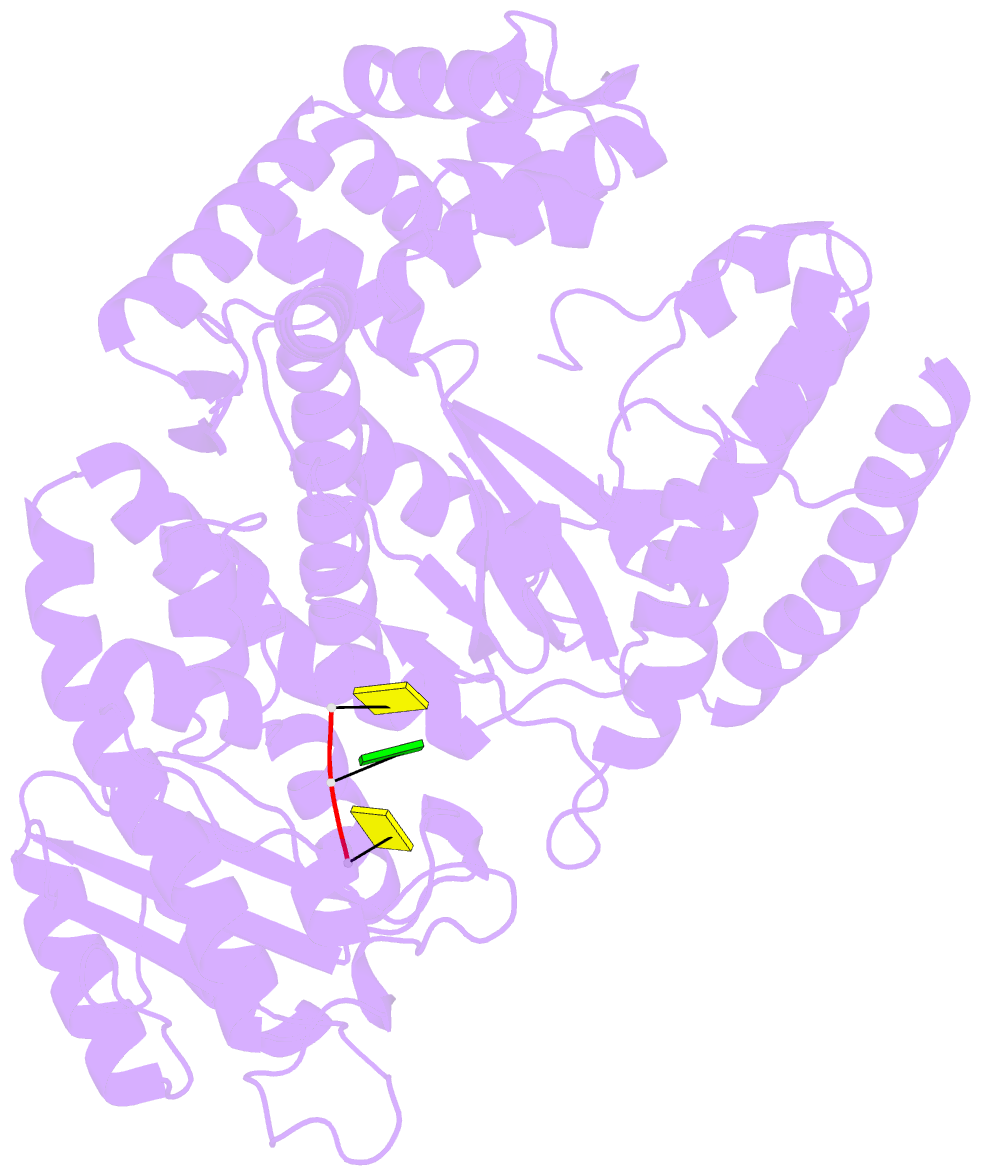Summary information and primary citation
- PDB-id
- 1qsl; SNAP-derived features in text and JSON formats;
DNAproDB
- Class
- transferase-DNA
- Method
- X-ray (2.2 Å)
- Summary
- Klenow fragment complexed with single-stranded substrate and europium (iii) ion
- Reference
- Brautigam CA, Aschheim K, Steitz TA (1999): "Structural elucidation of the binding and inhibitory properties of lanthanide (III) ions at the 3'-5' exonucleolytic active site of the Klenow fragment." Chem.Biol., 6, 901-908. doi: 10.1016/S1074-5521(00)80009-5.
- Abstract
- Background: Biochemical and biophysical experiments have shown that two catalytically essential divalent metal ions (termed 'A' and 'B') bind to the 3'-5' exonuclease active site of the Klenow fragment (KF) of Escherichia coli DNA polymerase I. X-ray crystallographic studies have established the normal positions in the KF 3'-5' exonuclease (KF exo) active site of the two cations and the single-stranded DNA substrate. Lanthanide (III) luminescence studies have demonstrated, however, that only a single europium (III) ion (Eu3+) binds to the KF exo active site. Furthermore, Eu3+ does not support catalysis by KF exo or several other two-metal-ion phosphoryl-transfer enzymes.
Results: A crystal structure of KF complexed with both Eu3+ and substrate single-stranded oligodeoxynucleotide shows that a lone Eu3+ is bound near to metal-ion site A. Comparison of this structure to a relevant native structure reveals that the bound Eu3+ causes a number of changes to the KF exo active site. The scissile phosphate of the substrate is displaced from its normal position by about 1 A when Eu3+ is bound and the presence of Eu3+ in the active site precludes the binding of the essential metal ion B.
Conclusions: The substantial, lanthanide-induced differences in metal-ion and substrate binding to KF exo account for the inhibition of this enzyme by Eu3+. These changes also explain the inability of KF exo to bind more than one cation in the presence of lanthanides. The mechanistic similarity between KF exo and other two-metal-ion phosphoryl-transfer enzymes suggests that the principles of lanthanide (III) ion binding and inhibition ascertained from this study will probably apply to most members of this class of enzymes.





